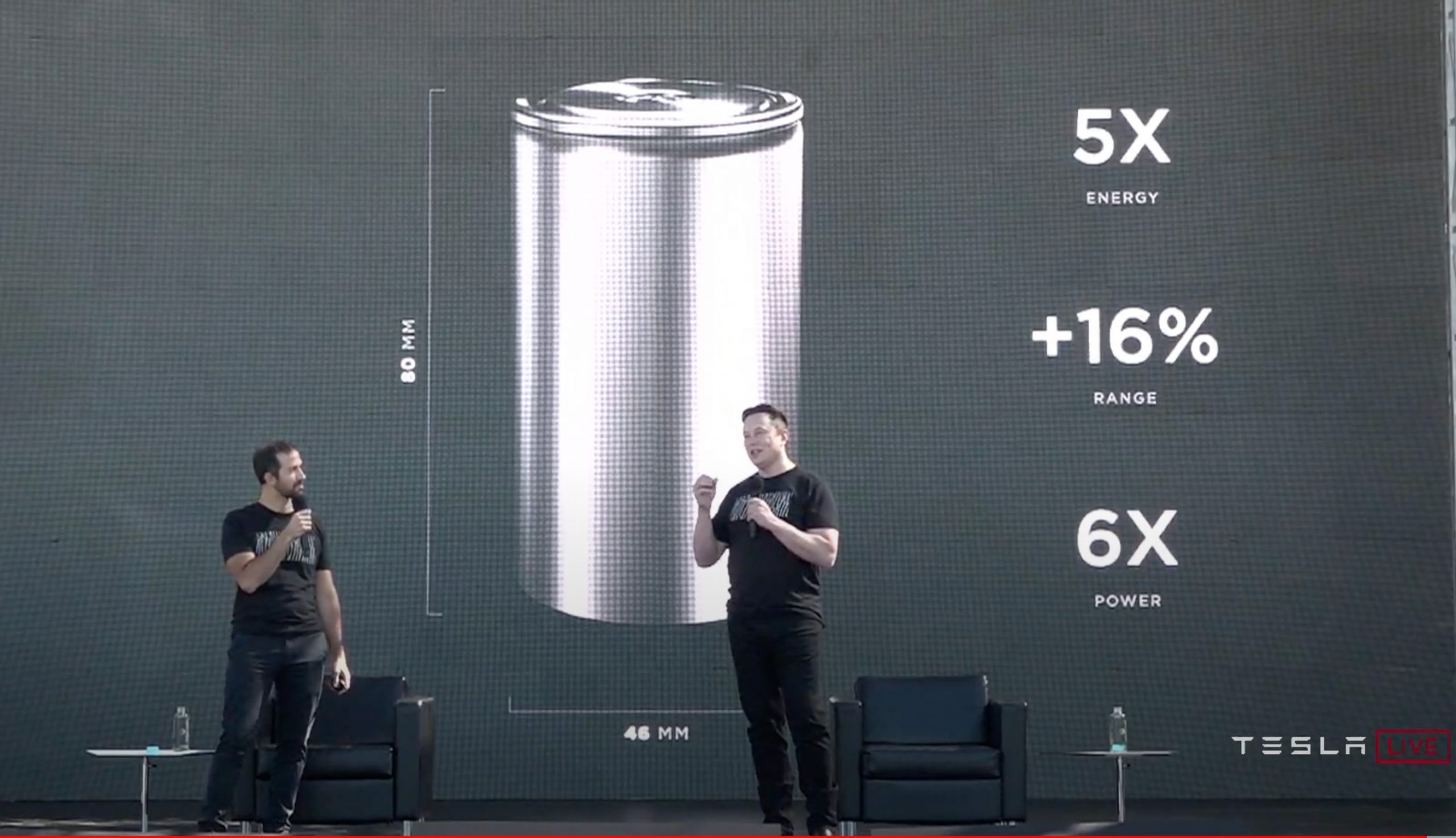
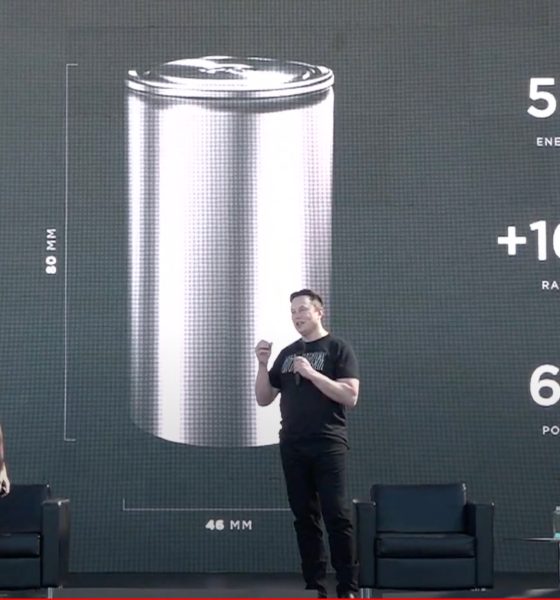
News
Tesla Giga Berlin’s 4680 supply won’t start in Germany, and it was never supposed to
Tesla’s plans for the initial battery needs and efforts at Giga Berlin were answered in late 2020 by the automaker during the Q3 Earnings Call. While things tend to change on a somewhat regular basis as far as plans for something as large as a vehicle manufacturing plant, Tesla knew that its initial battery fulfillment plans likely wouldn’t come from the planned Giga Berlin 4680 cell production lines. Instead, Tesla will rely on its Kato Road facility in Northern California, where the development and manufacturing of a new, revolutionary electric vehicle battery is taking place. Tesla also plans to utilize strong relationships with its battery cell manufacturers to solve supply concerns during Giga Berlin’s early production dates.
Concerns regarding Tesla’s planned timeline for Giga Berlin have arisen over the past several days, especially after a German media outlet said that CEO Elon Musk was extending the beginning of the German plant’s EV production efforts to January 2022. While the Giga Berlin timeline remains uncertain as far as the exact starting date, those close to the situation, including Brandenburg Economic Minister Jörg Steinbach, told Teslarati yesterday that production should begin in late Summer or early Fall 2021.
EXCLUSIVE: Tesla Giga Berlin isn’t facing a 6-month delay: German Minister
The concerns about Tesla Giga Berlin’s initial production date started to appear around the same time that reports began to surface about Tesla adding the 4680 battery manufacturing unit plans to its application. German regulators take a deliberate and somewhat extended time for large projects, as so many different factors are considered before anything is given ultimate approval. Some indicated that this extensive regulatory process would delay the production efforts altogether. Still, local sources in Germany have clarified that this only prolongs the project altogether and doesn’t have much of an effect on the start of production. The project will just take longer to complete considering Tesla added another element to the Giga Berlin offensive.
As previously mentioned, the addition of the 4680 line to the application likely caused confusion over whether the Tesla Giga Berlin production lines would activate on time. 4680 production at Berlin will not begin before or at the same time as Tesla’s vehicle production at the German plant. However, Tesla’s plans were never to have the Berlin 4680 lines handle the initial vehicle production at the plant. Tesla originally planned for the Kato Road 4680 lines to supply Giga Berlin with cells when they are available.
Drew Baglino, Tesla’s Senior Vice President of Powertrain and Energy Engineering, said during the Q3 2020 Earnings Call:
“We will incorporate 4680 design solutions into many applications in time across both energy and vehicle, and we can use our pilot production facility in Fremont to support the new factory in Berlin as it ramps.”
Additionally, Tesla’s battery suppliers are being called upon to assist in the initial efforts at Giga Berlin.
Musk announced during the most recent Q1 2021 Earnings Call that Tesla is about 12-18 months away from volume production of 4680 cells. While Tesla may be slightly behind schedule regarding the production of the new 4680 battery, there is no indication that it will delay Giga Berlin’s production altogether. In fact, Musk also acknowledged that its suppliers, who Tesla shares “very strong partnerships” with would be called upon to supply cells “as much as they possibly can.”
Musk said:
“…It appears as though we’re about 12 — probably not more than 18 months away from volume production of the 4680. Now at the same time, we are actually trying to have our cell supply of partners ramp up their supply as much as possible. So this is not something that is to the exclusion of suppliers. It is in conjunction with suppliers. So we want to be super clear about that. This is not about replacing suppliers. It is about supplementing the suppliers. So…and we have a very strong partnership with CATL, with Panasonic and LG. And we would…our request to our strategic partners for cell supply is, please make us…please supply us with as much as you possibly can. Provided the price is affordable, we will buy everything that they can make.”
This includes CATL, a Chinese battery producer who manufactures LFP cells for the Standard Range+ Model 3 at Giga Shanghai. CATL began the construction of a cell manufacturing facility in Germany in 2019. LG Chem also started the construction of an EV battery cell manufacturing facility in Poland in 2017, which could be used to supplement Tesla’s battery efforts in Germany. These suppliers have both assisted Tesla with cells in the past, and these companies will likely supplement Tesla’s needs at Giga Berlin, as Musk requested during the Q1 2021 Earnings Call.
Tesla has been aware that the 4680 lines in Berlin will not take care of the initial production phases at the factory. Instead, it will rely on suppliers and its Kato Road 4680 lines in the United States to take care of the first months of production at Giga Berlin.

News
Tesla Full Self-Driving shows confident navigation in heavy snow
So far, from what we’ve seen, snow has not been a huge issue for the most recent Full Self-Driving release. It seems to be acting confidently and handling even snow-covered roads with relative ease.
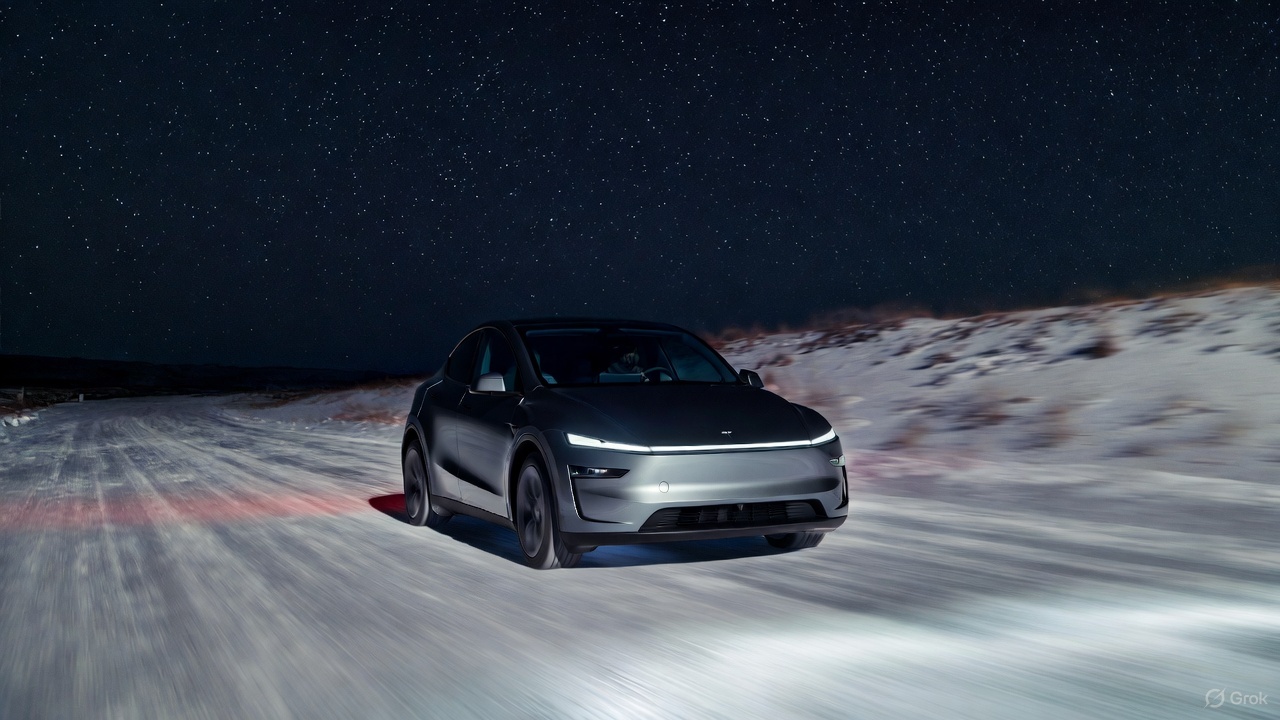
Tesla Full Self-Driving is getting its first taste of Winter weather for late 2025, as snow is starting to fall all across the United States.
The suite has been vastly improved after Tesla released v14 to many owners with capable hardware, and driving performance, along with overall behavior, has really been something to admire. This is by far the best version of FSD Tesla has ever released, and although there are a handful of regressions with each subsequent release, they are usually cleared up within a week or two.
Tesla is releasing a modified version of FSD v14 for Hardware 3 owners: here’s when
However, adverse weather conditions are something that Tesla will have to confront, as heavy rain, snow, and other interesting situations are bound to occur. In order for the vehicles to be fully autonomous, they will have to go through these scenarios safely and accurately.
One big issue I’ve had, especially in heavy rain, is that the camera vision might be obstructed, which will display messages that certain features’ performance might be degraded.
So far, from what we’ve seen, snow has not been a huge issue for the most recent Full Self-Driving release. It seems to be acting confidently and handling even snow-covered roads with relative ease:
FSD 14.1.4 snow storm Ontario Canada pic.twitter.com/jwK1dLYT0w
— Everything AI (@mrteslaspace) November 17, 2025
I found the steepest, unplowed hill in my area and tested the following:
• FSD 14.2.1 on summer tires
• FSD 14.2.1 on winter tires
• Manual drivingBut I think the most impressive part was how FSD went DOWN the hill. FSD in the snow is sublime $TSLA pic.twitter.com/YMcN7Br3PU
— Dillon Loomis (@DillonLoomis) December 2, 2025
Well.. I couldn’t let the boys have all the fun!
Threw the GoPro up and decided to FSD v14.2.1 in the snow. Roads were not compacted like the other day, a little slippery, but overall doable at lower speeds. Enjoy the video and holiday music 🎶
Liked:
Took turns super slow… pic.twitter.com/rIAIeh3Zu3— 🦋Diana🦋 (@99_Colorado) December 3, 2025
Moving into the winter months, it will be very interesting to see how FSD handles even more concerning conditions, especially with black ice, freezing rain and snow mix, and other things that happen during colder conditions.
We are excited to test it ourselves, but I am waiting for heavy snowfall to make it to Pennsylvania so I can truly push it to the limit.
News
Tesla hosts Rome Mayor for first Italian FSD Supervised road demo
The event marked the first time an Italian mayor tested the advanced driver-assistance system in person in Rome’s urban streets.
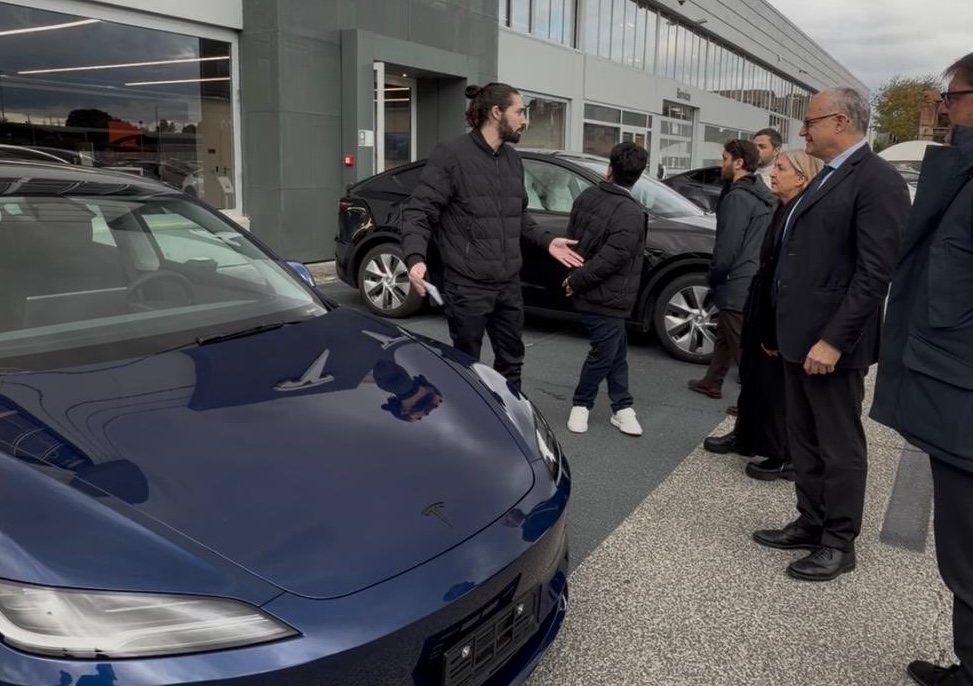
Tesla definitely seems to be actively engaging European officials on FSD’s capabilities, with the company hosting Rome Mayor Roberto Gualtieri and Mobility Assessor Eugenio Patanè for a hands-on road demonstration.
The event marked the first time an Italian mayor tested the advanced driver-assistance system in person in Rome’s urban streets. This comes amid Tesla’s push for FSD’s EU regulatory approvals in the coming year.
Rome officials experience FSD Supervised
Tesla conducted the demo using a Model 3 equipped with Full Self-Driving (Supervised), tackling typical Roman traffic including complex intersections, roundabouts, pedestrian crossings and mixed users like cars, bikes and scooters.
The system showcased AI-based assisted driving, prioritizing safety while maintaining flow. FSD also handled overtakes and lane decisions, though with constant driver supervision.
Investor Andrea Stroppa detailed the event on X, noting the system’s potential to reduce severe collision risks by up to seven times compared to traditional driving, based on Tesla’s data from billions of global fleet miles. The session highlighted FSD’s role as an assistance tool in its Supervised form, not a replacement, with the driver fully responsible at all times.
Path to European rollout
Tesla has logged over 1 million kilometers of testing across 17 European countries, including Italy, to refine FSD for local conditions. The fact that Rome officials personally tested FSD Supervised bodes well for the program’s approval, as it suggests that key individuals are closely watching Tesla’s efforts and innovations.
Assessor Patanè also highlighted the administration’s interest in technologies that boost road safety and urban travel quality, viewing them as aids for both private and public transport while respecting rules.
Replies on X urged involving Italy’s Transport Ministry to speed approvals, with one user noting, “Great idea to involve the mayor! It would be necessary to involve components of the Ministry of Transport and the government as soon as possible: it’s they who can accelerate the approval of FSD in Italy.”
News
Tesla FSD (Supervised) blows away French journalist after test ride
Cadot described FSD as “mind-blowing,” both for the safety of the vehicle’s driving and the “humanity” of its driving behaviors.
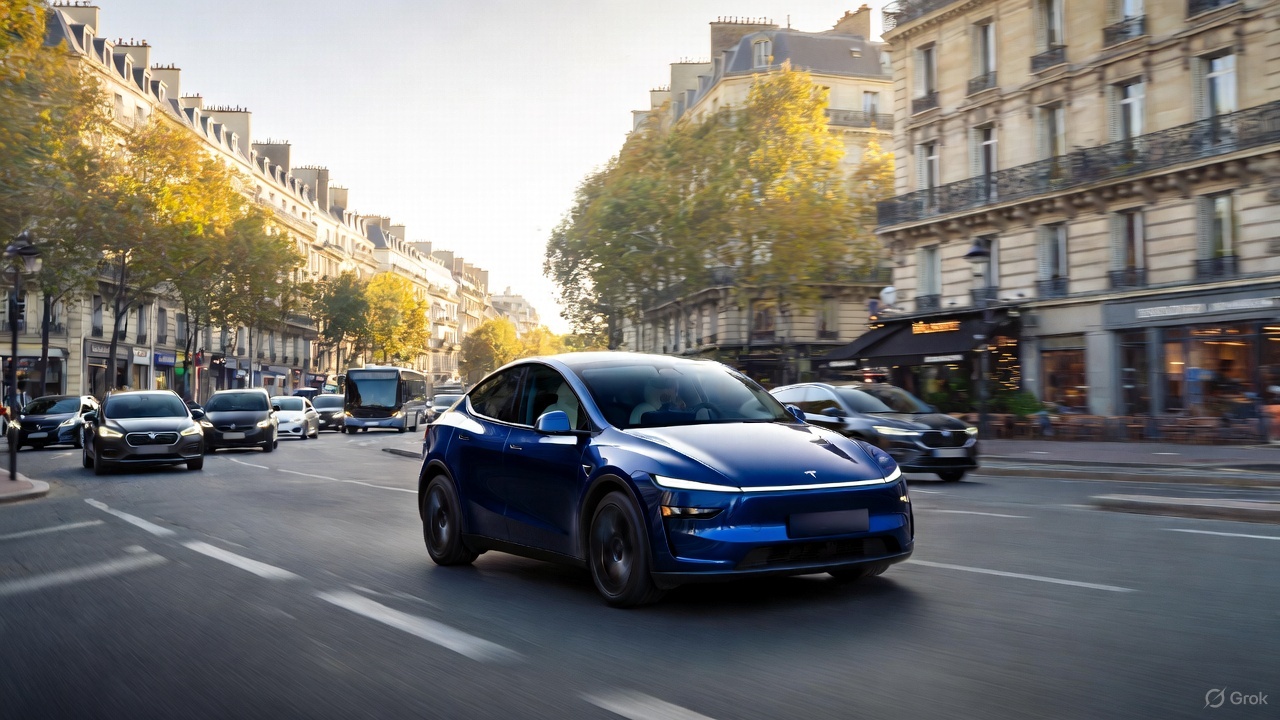
Tesla’s Full Self-Driving (Supervised) seems to be making waves in Europe, with French tech journalist Julien Cadot recently sharing a positive first-hand experience from a supervised test drive in France.
Cadot, who tested the system for Numerama after eight years of anticipation since early Autopilot trials, described FSD as “mind-blowing,” both for the safety of the vehicle’s driving and the “humanity” of its driving behaviors.
Julien Cadot’s FSD test in France
Cadot announced his upcoming test on X, writing in French: “I’m going to test Tesla’s FSD for Numerama in France. 8 years I’ve been waiting to relive the sensations of our very first contact with the unbridled Autopilot of the 2016s.” He followed up shortly after with an initial reaction, writing: “I don’t want to spoil too much because as media we were allowed to film everything and I have a huge video coming… But: it’s mind-blowing! Both for safety and for the ‘humanity’ of the choices.”
His later posts detailed FSD’s specific maneuvers that he found particularly compelling. These include the vehicle safely overtaking a delivery truck by inches, something Cadot said he personally would avoid to protect his rims, but FSD handled flawlessly. He also praised FSD’s cyclist overtakes, as the system always maintained the required 1.5-meter distance by encroaching on the opposite lane when clear. Ultimately, Cadot noted FSD’s decision-making prioritized safety and advancement, which is pretty remarkable.
FSD’s ‘human’ edge over Autopilot
When asked if FSD felt light-years ahead of standard Autopilot, Cadot replied: “It’s incomparable, it’s not the same language.” He elaborated on scenarios like bypassing a parked delivery truck across a solid white line, where FSD assessed safety and proceeded just as a human driver might, rather than halting indefinitely. This “humanity” impressed Cadot the most, as it allowed FSD to fluidly navigate real-world chaos like urban Paris traffic.
Tesla is currently hard at work pushing for the rollout of FSD to several European countries. Recent reports have revealed that Tesla has received approval to operate 19 FSD test vehicles on Spain’s roads, though this number could increase as the program develops. As per the Dirección General de Tráfico (DGT), Tesla would be able to operate its FSD fleet on any national route across Spain. Recent job openings also hint at Tesla starting FSD tests in Austria. Apart from this, the company is also holding FSD demonstrations in Germany, France, and Italy.








